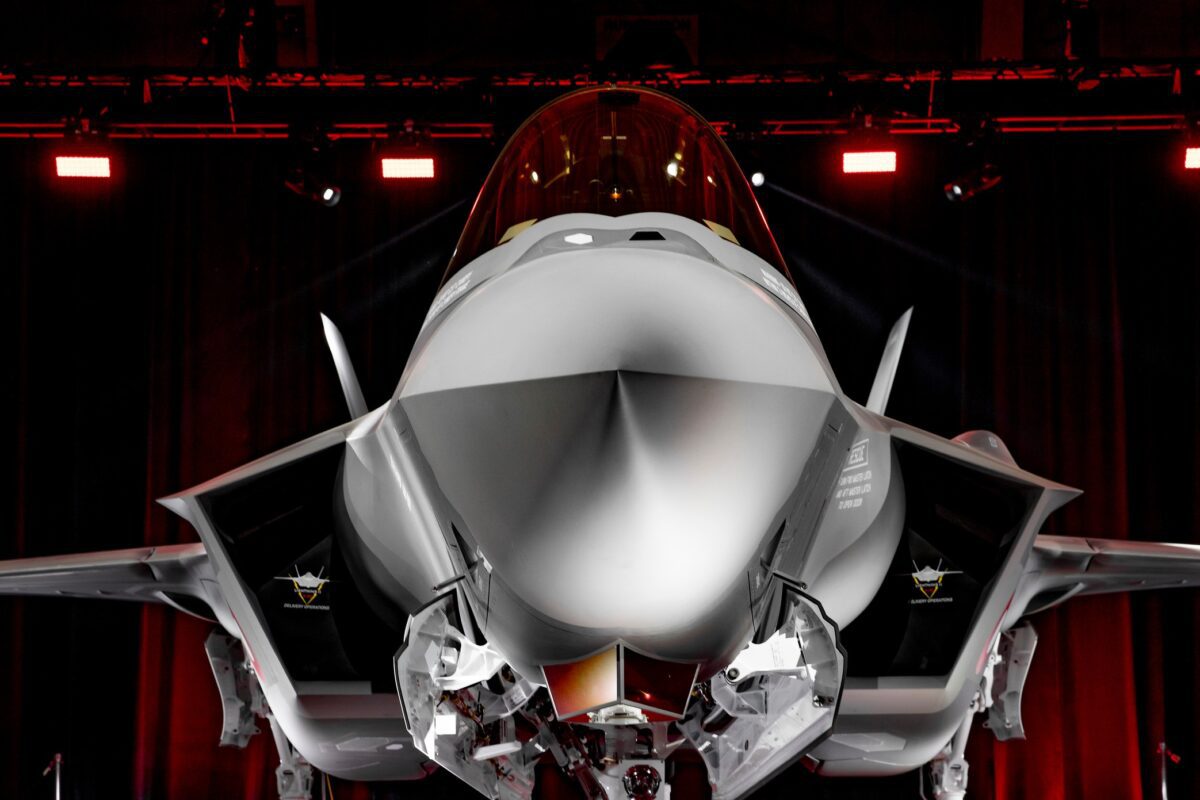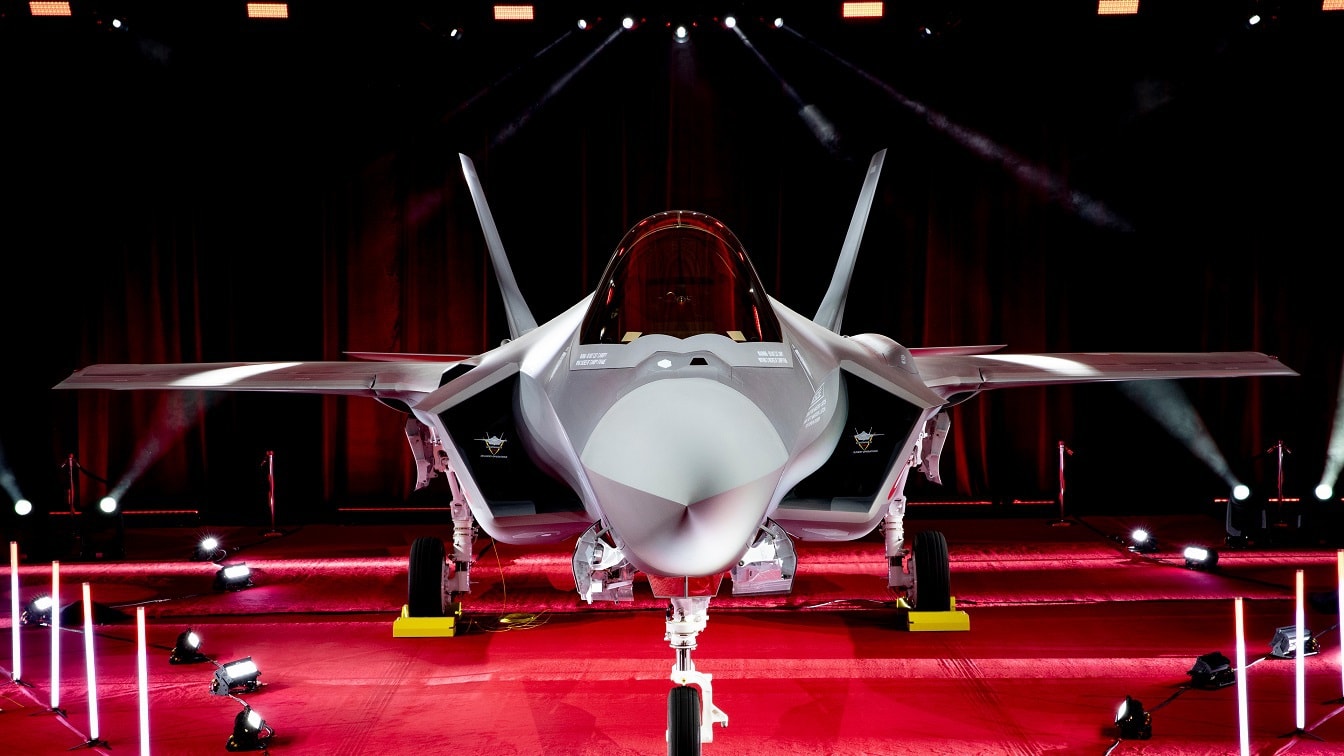The F-35: The Best Fighter Jet on Planet Earth? You Decide – Lots of ink has been spilled on why the F-35 isn’t worth the astounding money the Pentagon has spent or is planning to spend on it. To be sure, when an aircraft program ends up costing approximately $1.7 trillion, any concerns are justified, and expectations should be sky-high. But it is also worth exploring what makes the F-35 different and why it is so popular around the world despite its big price tag.
The F-35: A Popular Aircraft
A 5th generation multi-role fighter jet, the F-35 Lighting II is the most advanced plane in the world. The aircraft comes in three different variants, each designed for a different operating environment.
The F-35A is the conventional version that can take off and land normally from a runway. This is the most widely used or purchased iteration.
With a short take-off and vertical landing (STOVL) design, the F-35B was designed to take off and land like a helicopter before transitioning to jet mode in the air. This version can take off from extremely small surfaces and is a great option to put on helicopter carriers or small islands.
Lastly, the F-35C was designed to operate from aircraft carriers and has a more robust structure and landing mechanism.
In total, the Pentagon alone plans to purchase more than 2,500 F-35s of all versions, with the Air Force taking the lead with an intended target of about 1,700 F-35As, followed by the Marine Corps with about 410 F-35Bs and F-35Cs, with the Navy bringing up the rear with about 270 F-35Cs.
Today, 14 countries fly or intend to fly it (the U.S., U.K., Australia, Canada, Japan, Israel, Italy, Norway, Denmark, Poland, Singapore, Belgium, South Korea, and the Netherlands). Most of these countries are NATO member states, and by 2035, there will be more than 500 NATO F-35s in Europe to deter and deal with Russian aggression.
Despite its troubled technical past and high purchase and maintenance price tag, the F-35 is the most advanced fighter jet on the plant and a quite desirable aircraft. In addition to the 14 countries that already operate and will be flying it in the future, Spain, Finland, Greece, and the Czech Republic are also looking into getting some F-35s.
The F-35: A Capable Aircraft
According to Lockheed Martin, the aircraft manufacturer, the F-35 is capable of six mission sets.
Strategic Attack: For example, taking out Russian S-400 anti-aircraft systems in Crimea so follow on aircraft can dominate the battlefield and achieve crucial air superiority.
Close Air Support: for instance, supporting a Navy SEAL platoon in danger of being overrun by al-Shabaab terrorists in Somalia.
Air Superiority: for example, shooting down a Chinese J-10 fighter jet over the South China Sea and clearing the way for B-52 bombers to hit targets.
Electronic Warfare: for instance, jamming a Russian radar station close to the Baltics to allow older U.S. fighter jets to bomb it undetected.
Intelligence, Surveillance, and Reconnaissance (ISR): for example, flying above a compound that contains a high-value target in Tehran and providing a special operations element on the ground with an accurate picture of what is going in there and in the surrounding area.
Suppression Enemy Air Defenses (SEAD) and Destruction Enemy Air Defense(DEAD): for instance, taking out a North Korean radar station outside of Pyongyang to allow for an incoming flight of F-15s that is targeting a military airfield in the vicinity.
F-35: The Aerial Quarterback
What makes the F-35 unique isn’t its ability to perform the above missions, which other older aircraft can do too, although each with a varying degree of effectiveness, but its ability to play “captain” and organize and dominate the tactical fight.

F-35 Rollout in Denmark. Image Credit: Lockheed Martin.
The F-35’s groundbreaking sensors and data link capabilities allow the aircraft to be an airborne quarterback that can quickly take data from several different sources, such as the ground, sea, space, or air, and pass them along to other aircraft or units in the battlefield.
For example, an F-35’s sensors can receive radar indications from a U.S. Navy ship in the South China Sea and guide older aircraft, such as the F-15E or F-16D, to approaching Chinese J-10 fighters. This ability to make older platforms deadlier by showing them where targets are that otherwise, the 4th generation fighters wouldn’t have picked up so easily, makes the F-35 a force multiplier.
1945’s New Defense and National Security Columnist, Stavros Atlamazoglou is a defense journalist specializing in special operations, a Hellenic Army veteran (national service with the 575th Marine Battalion and Army HQ), and a Johns Hopkins University graduate.

